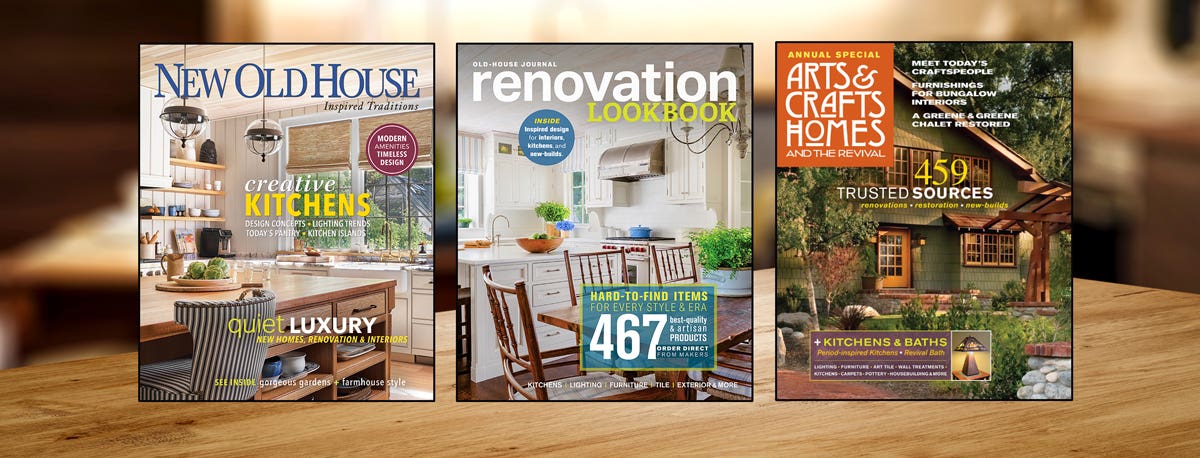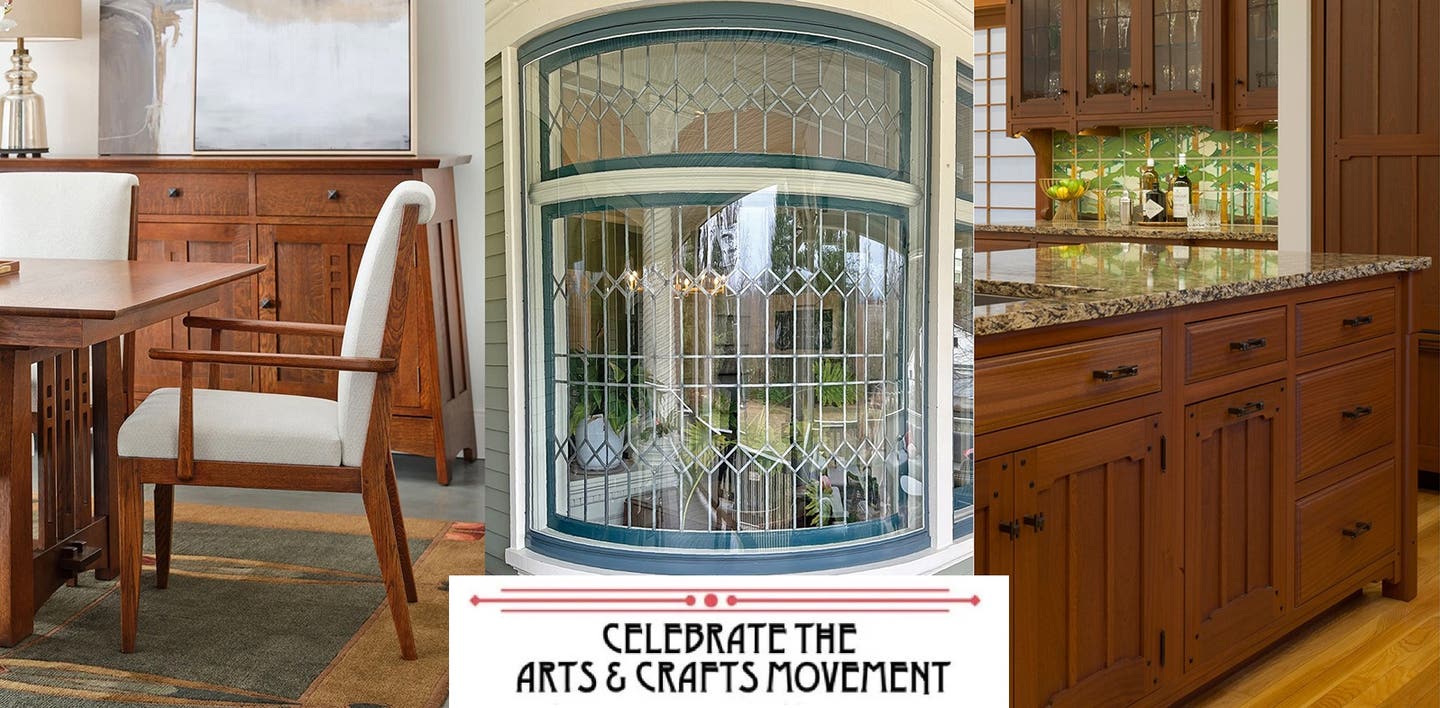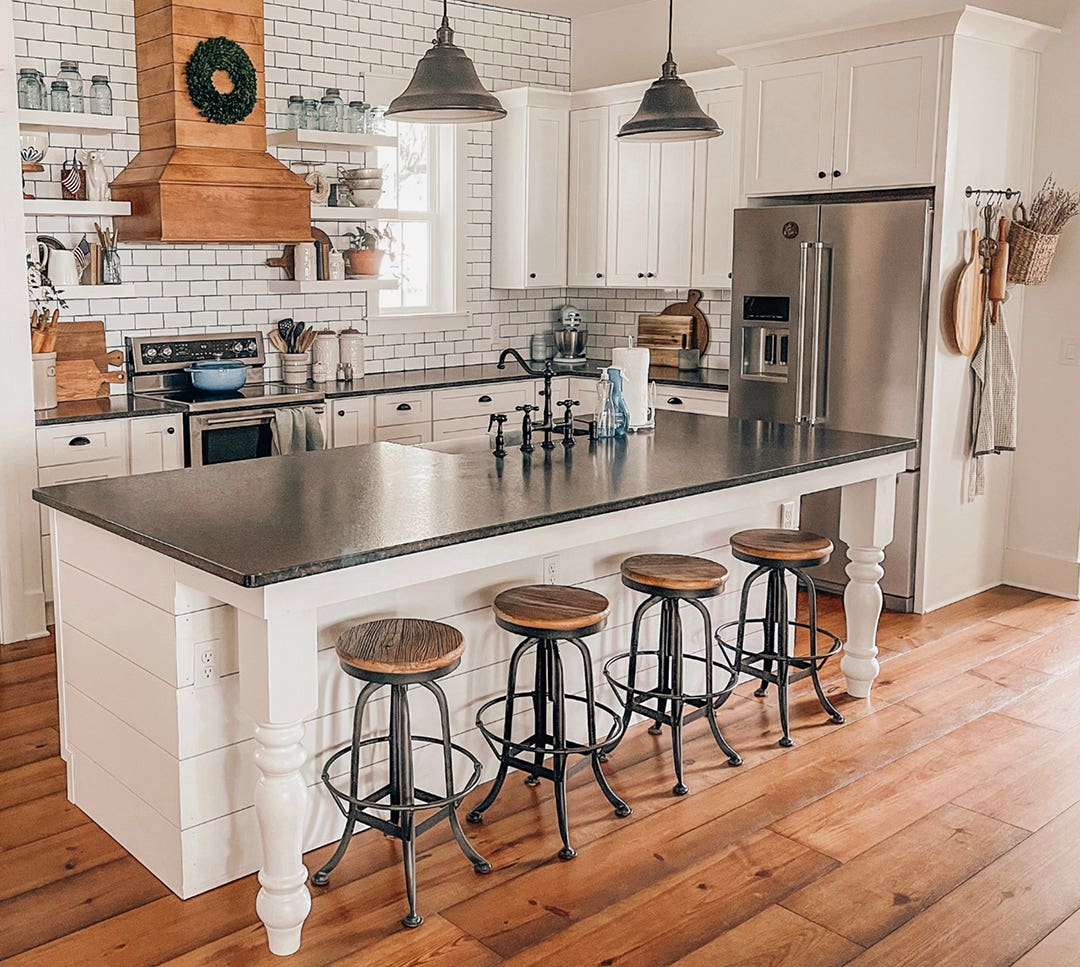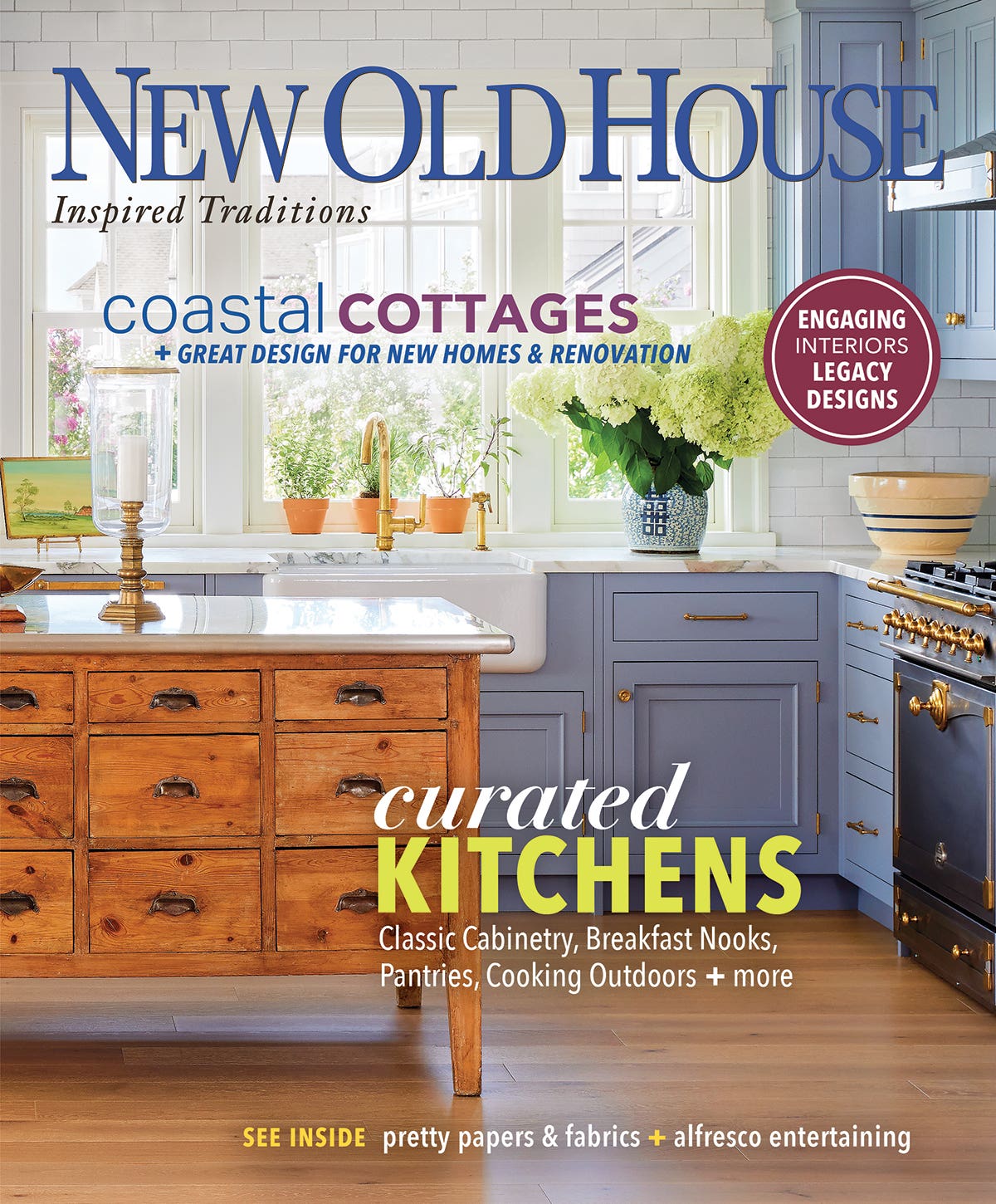The Guild: Gracewood Design
Ken Forcier and Gwenith Jones are reviving the practical painted canvas floorcloth, but with arresting new designs. Out of work and living in San Francisco during the dotcom bubble burst,…
Ken Forcier and Gwenith Jones are reviving the practical painted canvas floorcloth, but with arresting new designs.
Out of work and living in San Francisco during the dotcom bubble burst, Ken Forcier decided to give then-girlfriend Gwenith Jones a decidedly low-tech present: an old-fashioned, stenciled floorcloth. Gwenith “was over the moon” about it, Ken says, and a creative business idea was born. Ken came by the idea naturally: His mother is Polly Forcier of MB Historic Décor, who’s spent 40 years copying original stencil designs from historic New England walls and ceilings. It was Polly who sent Ken the big box of colored paints and stencil patterns that sparked the idea for the gift.
Once the couple launched Gracewood Designs as a collaborative effort in 2004, “Polly was very generous in giving us her entire set of stencils,” says Gwenith. Rather than simply make early American-style floorcloths, however, Ken and Gwenith adapted such traditional patterns and motifs as interlocking circles, pinwheels, and sunbursts in novel ways as part of original new designs, and branched into motifs suitable for later homes.
The husband-and-wife team broadened their collection of patterns far beyond the MB Historic Décor catalog. Among their discoveries is the Rudolf G. Smend Batik Collection, a series of Indonesian patterns 1880 to 1930, and late Victorian and early 20th-century stencils created by artist Alfred Rasmussen. Other floorcloths are inspired by a 1912 catalog from an Australian tin ceiling company, sent to them by a client. “They spoke rug to us,” Gwenith says.
Gracewood Designs is now based in Portland, Oregon, where Ken and Gwenith share a 1917 home and studio. Although they work in an idiom identified with early American folk art, they draw on design influences from many periods and locales. Fittingly, their floorcloths have been installed in 19 different countries. They also see their work as firmly anchored in one milleu. “The art we create is ultimately very aligned with the Arts & Crafts,” Ken says.
Made to Last
Gracewood’s floorcloths are sturdy. The labor-intensive process of making one begins by priming industrial-grade canvas duck on the back side, then adding two coats of gesso on the top, prepping for decorative surface. Once cured, the piece receives four to five coats of acrylic paint, with sandings between coats. The design is then hand-applied using a heavily pigmented acrylic gouache, which will not fade from sun exposure or age. “Each color is a pass with a different stencil,” Ken says. All paints are water-based and non-toxic.
Once the design is complete, Ken and Gwenith apply five to six coats of polyurethane, then finish the floorcloth with a 2" mitered hem. Each is backed with a combination of carpet padding and vinyl fabric. The backing prevents the floorcloth from slipping, and adds a layer of cushioning; vinyl helps prevent water penetration. Finally, a layer of hard paste wax may be applied as an option, which makes for easier cleaning.
The Waltzing Waratah
A most interesting commission came from a repeat client in Australia, who asked the couple to incorporate the national flower of New South Wales into a large rug design. The Australian folks sent along a copy of the Wunderlich Metal Ceiling Catalog from about 1912. The catalog was packed with intriguing designs—including one with a repeating pattern of the waratah that Ken and Gwenith chose as a starting point.
The catalog, of course, was in black and white. Since neither Ken nor Gwenith had ever seen a waratah, they turned to Google Images to better see the flower. Creating the stencil began with an intricate drawing. The patterns were then transferred to stencils to be cut and tested on a sample rug. The color palette came from Australian sources, too: a period drawing of a waratah from a 1915 book on floral decoration and ornament. The result, Waltzing Waratah, is an intensely colored floor covering that looks nothing like a tin ceiling.
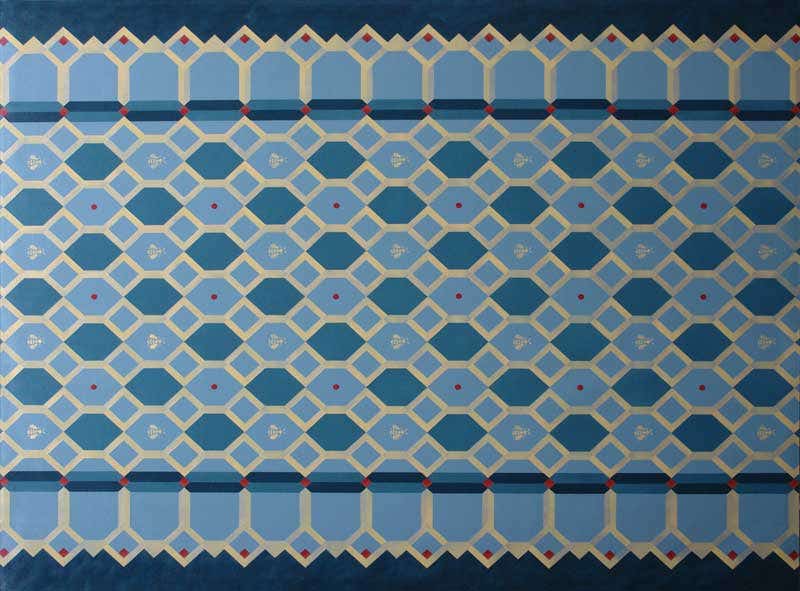
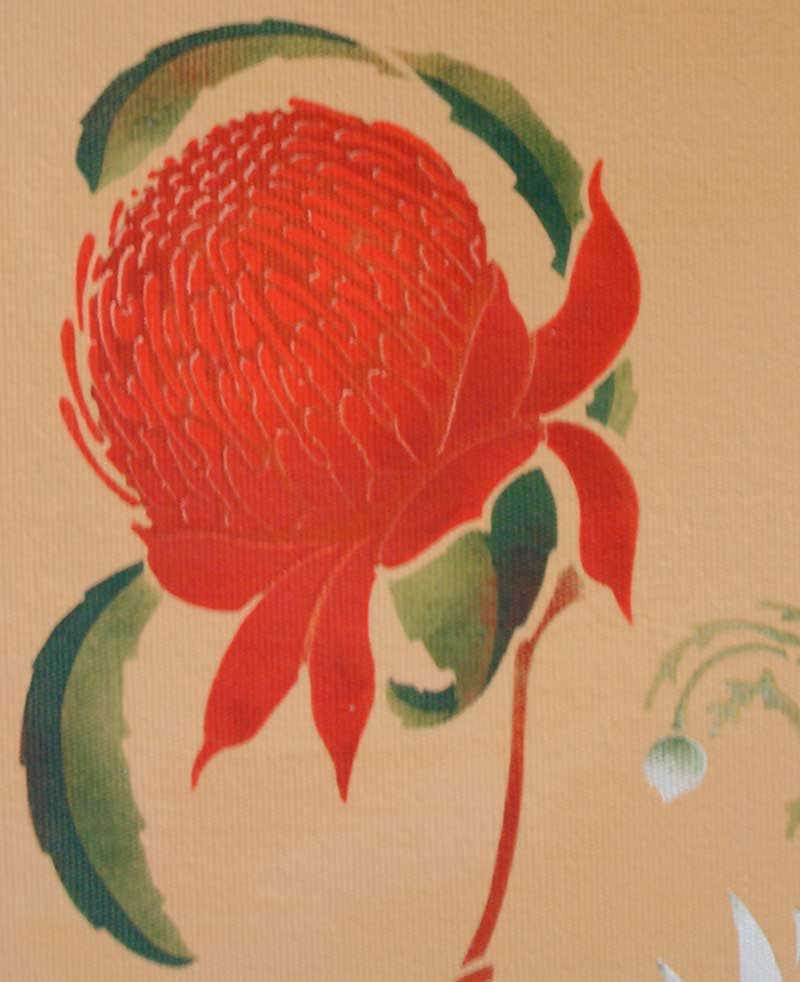
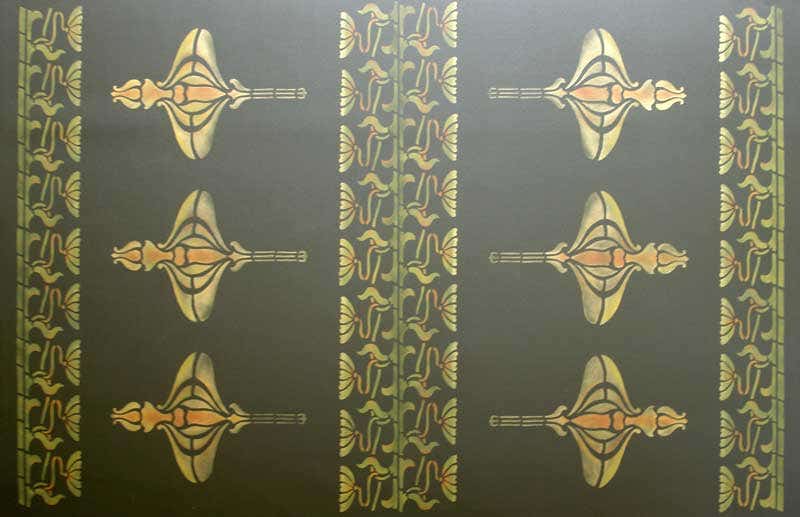
Gwenith Jones & Ken Forcier
Gracewood Design
Portland, OR
(503) 522-7660
gracewooddesign.com
Mary Ellen Polson is a creative content editor and technical writer with over 20 years experience producing heavily illustrated know how and service journalism articles, full-length books, product copy, tips, Q&As, etc., on home renovation, design, and outdoor spaces.



